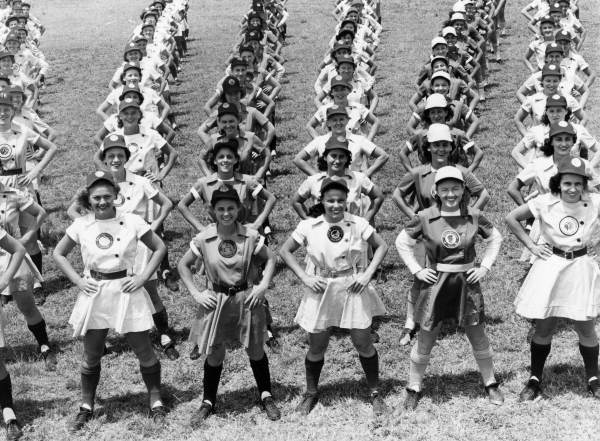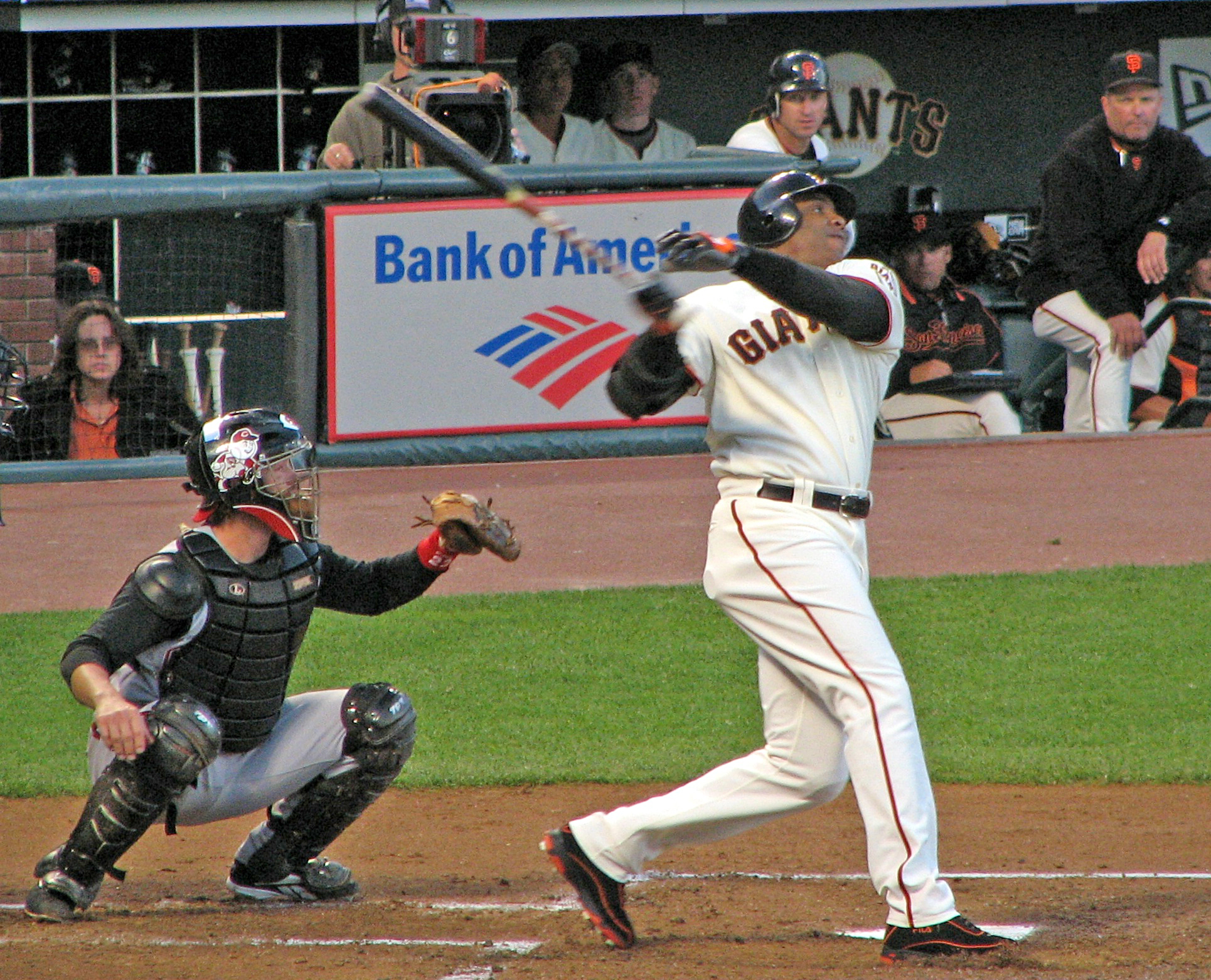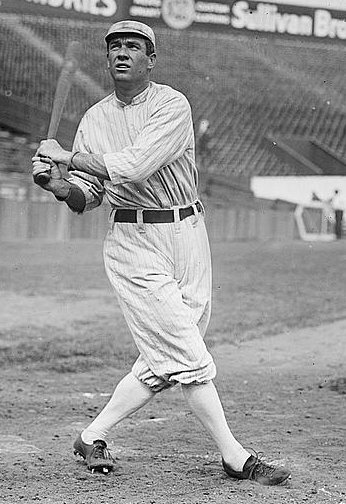|
Eileen Gascon
Eileen "Ginger" Gascon (born December 1, 1931) is a former baseball player who played center field and second base in the All-American Girls Professional Baseball League. She both batted and threw right-handed. Early life and career Born in Chicago, Illinois, she lived for around a decade (from when she was 8 until 18) near Wrigley Field. She was the youngest of three sisters. Her Irish immigrant mother was a housewife and her father worked as a truck driver. Since there were very few girls in the neighborhood from the time she turned 10, Gascon had to play ball otherwise she wouldn't have anyone with whom to play. She was pretty good and always went to the division meetings. Gascon studied Education and Psychology at a local college, the Northeastern Illinois State College in Chicago. She used her education to become an elementary teacher for six years and following that, a counselor for 28 years. Since she lived close to the Wrigley Field and her uncle was a policeman who wor ... [...More Info...] [...Related Items...] OR: [Wikipedia] [Google] [Baidu] |
All-American Girls Professional Baseball League
The All-American Girls Professional Baseball League (AAGPBL) was a professional women's baseball league founded by Philip K. Wrigley, which existed from 1943 to 1954. The AAGPBL is the forerunner of women's professional league sports in the United States. Over 600 women played in the league, which eventually consisted of 10 teams located in the American Midwestern United States, Midwest. In 1948, league attendance peaked at over 900,000 spectators. The most successful team, the Rockford Peaches, won a league-best four championships. The 1992 film ''A League of Their Own'' and the 2022 A League of Their Own (2022 TV series), television show of the same name are mostly fictionalized accounts of the league and its stars. Sixty-five original AAGPBL members appeared in scenes for the movie filmed in October 1991 recreating the induction of the league into the National Baseball Hall of Fame and Museum, Baseball Hall of Fame in 1988. History Founding Although the AAGPBL was the firs ... [...More Info...] [...Related Items...] OR: [Wikipedia] [Google] [Baidu] |
Games Played
Games played (GP) is a statistic used in team sports to indicate the total number of games in which a player has participated (in any capacity); the statistic is generally applied irrespective of whatever portion of the game is contested. Association football In association football, a game played is counted if a player is in the starting 11, or if a reserve player enters the game before full-time. Baseball In baseball, the statistic applies to players, who prior to a game, are included on a starting lineup card or are announced as an ''ex ante'' substitute, whether or not they play. For pitchers only, the statistic games pitched is used. A notable example of the application of the above rule is pitcher Larry Yount, who suffered an injury while throwing warmup pitches after being summoned as a reliever in a Major League Baseball (MLB) game on September 15, 1971. He did not face a batter, but was credited with an appearance because he had been announced as a substitute. Yount n ... [...More Info...] [...Related Items...] OR: [Wikipedia] [Google] [Baidu] |
On-base Percentage
In baseball statistics, on-base percentage (OBP) measures how frequently a batting (baseball), batter reaches base (baseball), base. An official Major League Baseball (MLB) statistic since 1984, it is sometimes referred to as on-base average (OBA), as it is rarely presented as a true percentage. Generally defined as "how frequently a batter reaches base per plate appearance", OBP is specifically calculated as the ratio of a batter's times on base (the sum of Hit (baseball), hits, base on balls, bases on balls, and times hit by pitch) to the sum of at bats, bases on balls, hit by pitch, and sacrifice fly, sacrifice flies. OBP does not credit the batter for reaching base on error (baseball), fielding errors, fielder's choice, uncaught third strikes, Obstruction (baseball), fielder's obstruction, or catcher's interference, and deducts from plate appearances a batter intentionally giving himself up in a sacrifice bunt. OBP is added to slugging average (SLG) to determine on-base plus ... [...More Info...] [...Related Items...] OR: [Wikipedia] [Google] [Baidu] |
Batting Average (baseball)
In baseball, batting average (BA) is determined by dividing a player's hits by their total at-bats. It is usually rounded to three decimal places and read without the decimal: A player with a batting average of .300 is said to be "batting three hundred". If necessary to break ties, batting averages could be taken beyond the .001 measurement. In this context, .001 is considered a "point", such that a .235 batter is five points higher than a .230 batter. History Henry Chadwick, an English statistician raised on cricket, was an influential figure in the early history of baseball. He is credited with creating the modern box score, in 1859, and the practice of denoting a strikeout with a "K". Chadwick wrote in 1869: "In making up a score at the close of the match the record should be as follows:–Name of player, total number of times the first base was made by clean hits, total bases so made, left on bases after clean hits, and the number of times the first base has been made on ... [...More Info...] [...Related Items...] OR: [Wikipedia] [Google] [Baidu] |
Strikeout
In baseball or softball, a strikeout (or strike-out) occurs when a batter accumulates three strikes during a time at bat. It means the batter is out, unless the third strike is not caught by the catcher and the batter reaches first base safely as a result. A strikeout is a statistic recorded for both pitchers and batters, and is usually denoted by the letter K, or sometimes by the initialism SO. A " strikeout looking"—in which the batter does not swing and the third strike is called by the umpire—may be denoted by an inverted K (i.e. ꓘ). Although a strikeout suggests that the pitcher dominated the batter, the free-swinging style that generates home runs also leaves batters susceptible to striking out. Some of the most prolific home run hitters of all time (such as Adam Dunn, Mickey Mantle, Reggie Jackson, Alex Rodriguez, and Jim Thome) were notorious for striking out often. Notably, Jackson and Thome respectively hold the major league records for most and second mo ... [...More Info...] [...Related Items...] OR: [Wikipedia] [Google] [Baidu] |
Base On Balls
A base on balls (BB), better known as a walk, occurs in baseball when a batter receives four pitches during a plate appearance that the umpire calls '' balls'', and is in turn awarded first base without the possibility of being called out. The base on balls is defined in Section 2.00 of baseball's Official Rules, and further detail is given in 6.08(a). Despite being known as a "walk", it is considered a faux pas for a professional player to actually walk to first base; the batter-runner and any advancing runners normally jog on such a play. The term "base on balls" distinguishes a walk from the other manners in which a batter can be awarded first base without liability to be put out (e.g., hit by pitch (HBP), catcher's interference). Though a base on balls, catcher's interference, or a batter hit by a pitched ball all result in the batter (and possibly runners on base) being awarded a base, the term "walk" usually refers only to a base on balls, and not the other methods of r ... [...More Info...] [...Related Items...] OR: [Wikipedia] [Google] [Baidu] |
Total Bases
In baseball statistics, total bases is the number of bases a player gains with hit (baseball), hits. It is a weighted sum with values of 1 for a single (baseball), single, 2 for a double (baseball), double, 3 for a triple (baseball), triple and 4 for a home run. For example, three singles is three total bases, while a double and a home run is six total bases. Only bases attained from hits count toward this total. Reaching base by other means (such as a base on balls) or advancing further after the hit (such as a stolen base) does not increase the player's total bases. In Box score (baseball), box scores and other statistical summaries, total bases is often denoted by the abbreviation TB. The total bases divided by the number of at bats is the player's slugging percentage. Records Hank Aaron's 6,856 career total bases make him the all-time MLB record holder. Having spent the majority of his career playing in the National League (baseball), National League, he also holds that l ... [...More Info...] [...Related Items...] OR: [Wikipedia] [Google] [Baidu] |
Stolen Base
In baseball, a stolen base occurs when a runner advances to a base unaided by other actions and the official scorer rules that the advance should be credited to the action of the runner. The umpires determine whether the runner is safe or out at the next base, but the official scorer rules on the question of credit or blame for the advance under Rule 10 (Rules of Scoring) of the MLB's Official Rules. A stolen base most often occurs when a base runner advances to the next base while the pitcher is pitching the ball to home plate. Successful base stealers must be fast and have good timing. Background Ned Cuthbert, playing for the Philadelphia Keystones in either 1863 or 1865, was the first player to steal a base in a baseball game, although the term ''stolen base'' was not used until 1870. For a time in the 19th century, stolen bases were credited when a baserunner reached an extra base on a base hit from another player. For example, if a runner on first base reached third ... [...More Info...] [...Related Items...] OR: [Wikipedia] [Google] [Baidu] |
Run Batted In
A run batted in or runs batted in (RBI) is a statistic in baseball and softball that credits a batter for making a play that allows a run to be scored (except in certain situations such as when an error is made on the play). For example, if the batter bats a base hit which allows a teammate on a higher base to reach home and so score a run, then the batter gets credited with an RBI. Before the 1920 Major League Baseball season, runs batted in were not an official baseball statistic. Nevertheless, the RBI statistic was tabulated—unofficially—from 1907 through 1919 by baseball writer Ernie Lanigan, according to the Society for American Baseball Research. Common nicknames for an RBI include "ribby" (or "ribbie"), "rib", and "ribeye". The plural of "RBI" is a matter of "(very) minor controversy" for baseball fans:; it is usually "RBIs", in accordance with the usual practice for pluralizing initialisms in English; however, some sources use "RBI" as the plural, on the basis ... [...More Info...] [...Related Items...] OR: [Wikipedia] [Google] [Baidu] |
Home Run
In baseball, a home run (abbreviated HR) is scored when the Baseball (ball), ball is hit in such a way that the batting (baseball), batter is able to circle the bases and reach home plate safe (baseball), safely in one play without any error (baseball), errors being committed by the Defense (sports), defensive team. A home run is usually achieved by hitting the ball over the outfield fence between the foul poles (or hitting either foul pole) without the ball touching the Baseball field, field. Inside-the-park home runs where the batter reaches home safely while the baseball is in play on the field are infrequent. In very rare cases, a fielder attempting to catch a ball in flight may misplay it and knock it over the outfield fence, resulting in a home run. An official scorer will credit the batter with a hit (baseball), hit, a Run (baseball), run scored, and a run batted in (RBI), as well as an RBI for each Base running, runner on base. The pitcher is recorded as having given u ... [...More Info...] [...Related Items...] OR: [Wikipedia] [Google] [Baidu] |
Triple (baseball)
In baseball, a triple is the act of a Batter (baseball), batter safely reaching third base after hitting the ball, with neither the benefit of a fielder's misplay (see error (baseball statistics), error) nor another baserunner, runner being put out on a fielder's choice. A triple is sometimes called a "three-bagger" or "three-base hit". For baseball statistics, statistical and baseball scorekeeping, scorekeeping purposes it is denoted by 3B. Triples have become somewhat rare in Major League Baseball, less common than both the Double (baseball), double and the home run. This is because it requires a ball to be hit solidly to a distant part of the field (ordinarily a line drive or Fly ball (baseball), fly ball near the Foul line (baseball), foul line closest to Right fielder, right field), or the ball to take an irregular bounce in the outfield, usually against the wall, away from a outfielder, fielder. It also requires the batter's team to have a good strategic reason for wanting ... [...More Info...] [...Related Items...] OR: [Wikipedia] [Google] [Baidu] |
Double (baseball)
In baseball, a double is the act of a batter striking the pitched ball and safely reaching second base without being called out by the umpire, without the benefit of a fielder's misplay (see error) or another runner being put out on a fielder's choice. A double is a type of hit (the others being the single, triple and home run) and is sometimes called a "two-bagger" or "two-base hit". For statistical and scorekeeping purposes it is denoted by 2B. Description Typically, a double is a well-hit ball into the outfield that finds the "gap" between the center fielder and one of the corner outfielders, bounces off the outfield wall and down into the field of play, or is hit up one of the two foul lines. To hit many doubles, a batter must have decent hitting skill and power; it also helps to run well enough to beat an outfield throw. Many of the best double hitting batters were revered for high baseball IQ and the ability to slide well and turn a single into an extra-base h ... [...More Info...] [...Related Items...] OR: [Wikipedia] [Google] [Baidu] |







